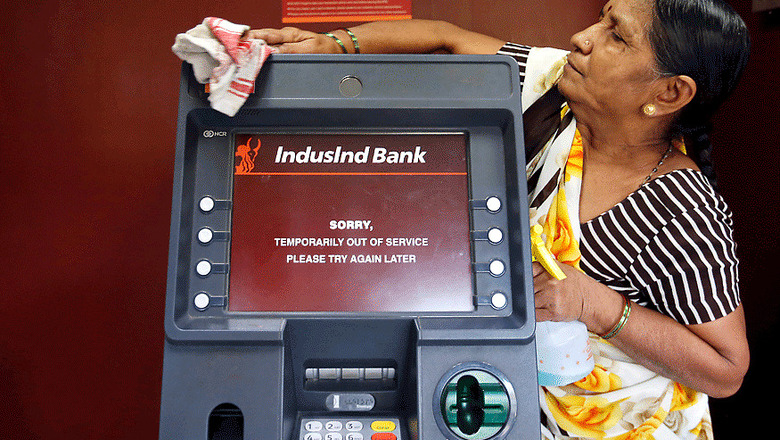
views
There are 2.5 lakh ATMs across the length and breadth of the country. Each of them needs to be calibrated to support the new currency regime. So, you might initially escape the queue in front of banks to exchange Rs 500 and Rs 1000 notes but very soon you will have to queue in front of ATMs.
Like it or not, it will take at least 10 to 15 days time to bring normalcy in ATMs in urban areas. The wait will be even longer for rural and remote areas of the country.
In an exclusive interaction with Debashis Sarkar of News18 Tech, NCR India Managing Director Navroze Dastur shares how busy banks and ATM service providers will be. For those unaware, NCR is one of the leading ATM service providers in India with over 1,00,000 ATMs currently deployed.
What needs to be done?
All players in the ecosystem have a key role to play in this- Banks, CIT (Cash-in-Transit) agencies and ATM service providers. There are roughly around 2 Lakh ATMs that only dispenses cash. The rest are deposit link machines.
With the change in denomination, what typically needs to be done is to reset existing ATMs to dispense large portions of Rs 100 notes or the new Rs 2000 notes. ATMs are required to be calibrated at the switch level. Also, changes are needed to be done to the switch itself by the bank and service providers like NCR will have to make changes on each ATM on the field, physically. The configurations in the cassettes will have to undergo changes as well.
It is a field activity. As this came as a surprise announcement, all the ATMs had a lot of cash left in them. The first job is to evacuate all the machines. Then we need to load only Rs 100 notes and when Rs 2000 and Rs 500 notes will be available, we will have to feed the machines with that as well.
The ATMs need to be calibrated only when new notes are introduced into the system. There will be some modifications in the cassettes, nothing else.
What about Rs 50 notes?
Banks are also looking forward to adopt Rs 50 notes in ATMs for the time being. There are banks already dispensing Rs 50 notes, even prior to this announcement. There is not much change required for that. Most machines are capable of dispensing Rs 50 notes. Until now, the whole question was on the availability of Rs 50 notes.
Can existing ATMs read security features of new notes?
Cash dispensing machines cannot check the authenticity of the currency notes that they are giving out. So, the security features of new notes are not a concern for existing ATMs. However, this will impact deposit machines.
In the deposit machine, they will have to tune the software to start accepting the new currency and check the security features of the new notes. This is not required for the regular cash dispensing ATMs.
By when can we expect things to normalise?
The question is about physically reaching 2 lakh ATMs across the country. If you want to target all of them then it will take a lot of time. You will have to identify the crucial areas and cater to those areas first. For urban areas, I think it should take about 10 to 15 days to bring normalcy. Another important aspect is availability of currency notes.
Are there any financial impact?
There will be a slight cost for all players in the ecosystem. The cost associated will be mostly restricted to field visits. There are no major costs associated to introduce the new currency regime in terms of technology or other type of support.
Are banks interested in buying cash deposit machines to boost currency exchange?
As of now, I don’t think any bank is looking at buying anything more than what they already have. The only priority is to gear up to gain 100% efficiency till December 30.




















Comments
0 comment